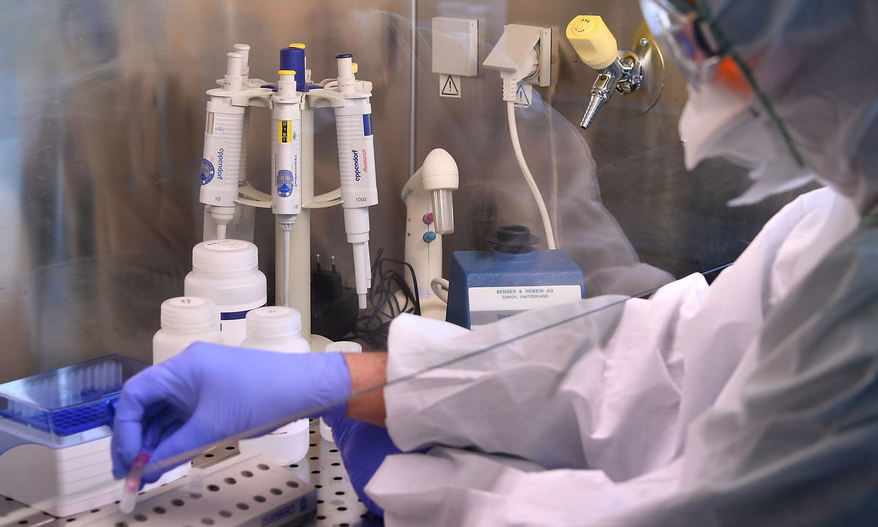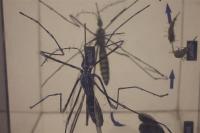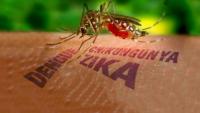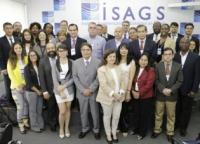Escaping the ‘Era of Pandemics’: Experts Warn Worse Crises to Come Options Offered to Reduce Risk

Future pandemics will emerge more often, spread more rapidly, do more damage to the world economy and kill more people than COVID-19 unless there is a transformative change in the global approach to dealing with infectious diseases, warns a major new report on biodiversity and pandemics by 22 leading experts from around the world.
Convened by the Intergovernmental Science-Policy Platform on Biodiversity and Ecosystem Services (IPBES) for an urgent virtual workshop about the links between degradation of nature and increasing pandemic risks, the experts agree that escaping the era of pandemics is possible, but that this will require a seismic shift in approach from reaction to prevention.
COVID-19 is at least the sixth global health pandemic since the Great Influenza Pandemic of 1918, and although it has its origins in microbes carried by animals, like all pandemics its emergence has been entirely driven by human activities, says the report released on Thursday. It is estimated that another 1.7 million currently ‘undiscovered’ viruses exist in mammals and birds – of which up to 850,000 could have the ability to infect people.
“There is no great mystery about the cause of the COVID-19 pandemic – or of any modern pandemic”, said Dr. Peter Daszak, President of EcoHealth Alliance and Chair of the IPBES workshop. “The same human activities that drive climate change and biodiversity loss also drive pandemic risk through their impacts on our environment. Changes in the way we use land; the expansion and intensification of agriculture; and unsustainable trade, production and consumption disrupt nature and increase contact between wildlife, livestock, pathogens and people. This is the path to pandemics.”
Pandemic risk can be significantly lowered by reducing the human activities that drive the loss of biodiversity, by greater conservation of protected areas, and through measures that reduce unsustainable exploitation of high biodiversity regions. This will reduce wildlife-livestock-human contact and help prevent the spillover of new diseases, says the report.
“The overwhelming scientific evidence points to a very positive conclusion,” said Dr. Daszak. “We have the increasing ability to prevent pandemics – but the way we are tackling them right now largely ignores that ability. Our approach has effectively stagnated – we still rely on attempts to contain and control diseases after they emerge, through vaccines and therapeutics. We can escape the era of pandemics, but this requires a much greater focus on prevention in addition to reaction.”
“The fact that human activity has been able to so fundamentally change our natural environment need not always be a negative outcome. It also provides convincing proof of our power to drive the change needed to reduce the risk of future pandemics – while simultaneously benefiting conservation and reducing climate change.”
The report says that relying on responses to diseases after their emergence, such as public health measures and technological solutions, in particular the rapid design and distribution of new vaccines and therapeutics, is a “slow and uncertain path”, underscoring both the widespread human suffering and the tens of billions of dollars in annual economic damage to the global economy of reacting to pandemics.
Pointing to the likely cost of COVID-19 of $8-16 trillion globally by July 2020, it is further estimated that costs in the United States alone may reach as high as $16 trillion by the 4th quarter of 2021. The experts estimate the cost of reducing risks to prevent pandemics to be 100 times less than the cost of responding to such pandemics, “providing strong economic incentives for transformative change.”
The report also offers a number of policy options that would help to reduce and address pandemic risk. Among these are:
-
Launching a high-level intergovernmental council on pandemic prevention to provide decision-makers with the best science and evidence on emerging diseases; predict high-risk areas; evaluate the economic impact of potential pandemics and to highlight research gaps. Such a council could also coordinate the design of a global monitoring framework.
-
Countries setting mutually-agreed goals or targets within the framework of an international accord or agreement – with clear benefits for people, animals and the environment.
-
Institutionalizing the ‘One Health’ approach in national governments to build pandemic preparedness, enhance pandemic prevention programs, and to investigate and control outbreaks across sectors.
-
Developing and incorporating pandemic and emerging disease risk health impact assessments in major development and land-use projects, while reforming financial aid for land-use so that benefits and risks to biodiversity and health are recognized and explicitly targeted.
-
Ensuring that the economic cost of pandemics is factored into consumption, production, and government policies and budgets.
-
Enabling changes to reduce the types of consumption, globalized agricultural expansion and trade that have led to pandemics – this could include taxes or levies on meat consumption, livestock production and other forms of high pandemic-risk activities.
-
Reducing zoonotic disease risks in the international wildlife trade through a new intergovernmental ‘health and trade’ partnership; reducing or removing high disease-risk species in the wildlife trade; enhancing law enforcement in all aspects of the illegal wildlife trade and improving community education in disease hotspots about the health risks of wildlife trade.
-
Valuing Indigenous Peoples and local communities’ engagement and knowledge in pandemic prevention programs, achieving greater food security, and reducing consumption of wildlife.
-
Closing critical knowledge gaps such as those about key risk behaviors, the relative importance of illegal, unregulated, and the legal and regulated wildlife trade in disease risk, and improving understanding of the relationship between ecosystem degradation and restoration, landscape structure and the risk of disease emergence.
Speaking about the workshop report, Dr. Anne Larigauderie, Executive Secretary of IPBES said: “The COVID-19 pandemic has highlighted the importance of science and expertise to inform policy and decision-making. Although it is not one of the typical IPBES intergovernmental assessments reports, this is an extraordinary peer-reviewed expert publication, representing the perspectives of some of the world’s leading scientists, with the most up-to-date evidence and produced under significant time constraints. We congratulate Dr. Daszak and the other authors of this workshop report and thank them for this vital contribution to our understanding of the emergence of pandemics and options for controlling and preventing future outbreaks. This will inform a number of IPBES assessments already underway, in addition to offering decision-makers new insights into pandemic risk reduction and options for prevention.”



